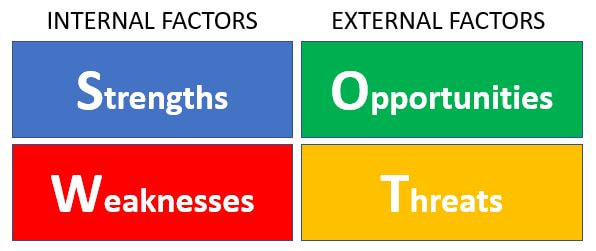|
Business strategists today use a variety of analytical methods depending on the market setting and business objectives. Porter’s tools such as Five Forces and Strategic Group Maps are frequently used in mature markets. The Strategy Canvas from Kim and Mauborgne is helpful when pioneering new markets. Barney’s VRIO framework helps us assess the competitive advantage provided by resources. The Business Model Canvas from Osterwalder and Pigneur maps out the value chain leading to revenue streams. But the most popular tool still used by most businesses is the venerable SWOT analysis: identifying the Strengths, Weaknesses, Opportunities and Threats of the business, and leveraging (or mitigating) them into business strategy. But to whom do we attribute SWOT? A review of the academic research finds many articles on the application of SWOT, and a few critiquing it, but none claiming its origin. Almost all strategy textbooks address it, but do not credit its developer. Following the trail of references from these publications leads to work by Kenneth R. Andrews and his colleagues at Harvard Business School, as reflected in Business Policy: Text and Cases published in 1965. However, the earliest work I found comes from Albert S. Humphrey and colleagues at the Stanford Research Institute (now SRI International) starting as early as 1960. Humphrey’s team studied Fortune 500 companies during the early days of corporate planning to determine what was working and what was not. They had some interesting findings which are a good subject for another time. But the framework they developed in the process was called SOFT, standing for Satisfactory (similar to strength), Opportunity, Fault (a weakness) and Threat. Whether or how SOFT evolved into SWOT is unclear. But we are all glad the result was such a simple yet powerful method for assessing the internal and external factors influencing a business and its outlook. One quick note on the aforementioned critiques of SWOT. The primary argument is that SWOT is so easy to use, it can be abused. If assessed quickly, key weaknesses or threats could be missed. Strengths and opportunities could be claimed without sufficient supporting evidence. To the extent that SWOT is done poorly, so too will be the resulting strategy. I think this is a fair caution to all SWOT practitioners. However, it applies to every other tool in the toolbox also.
|

